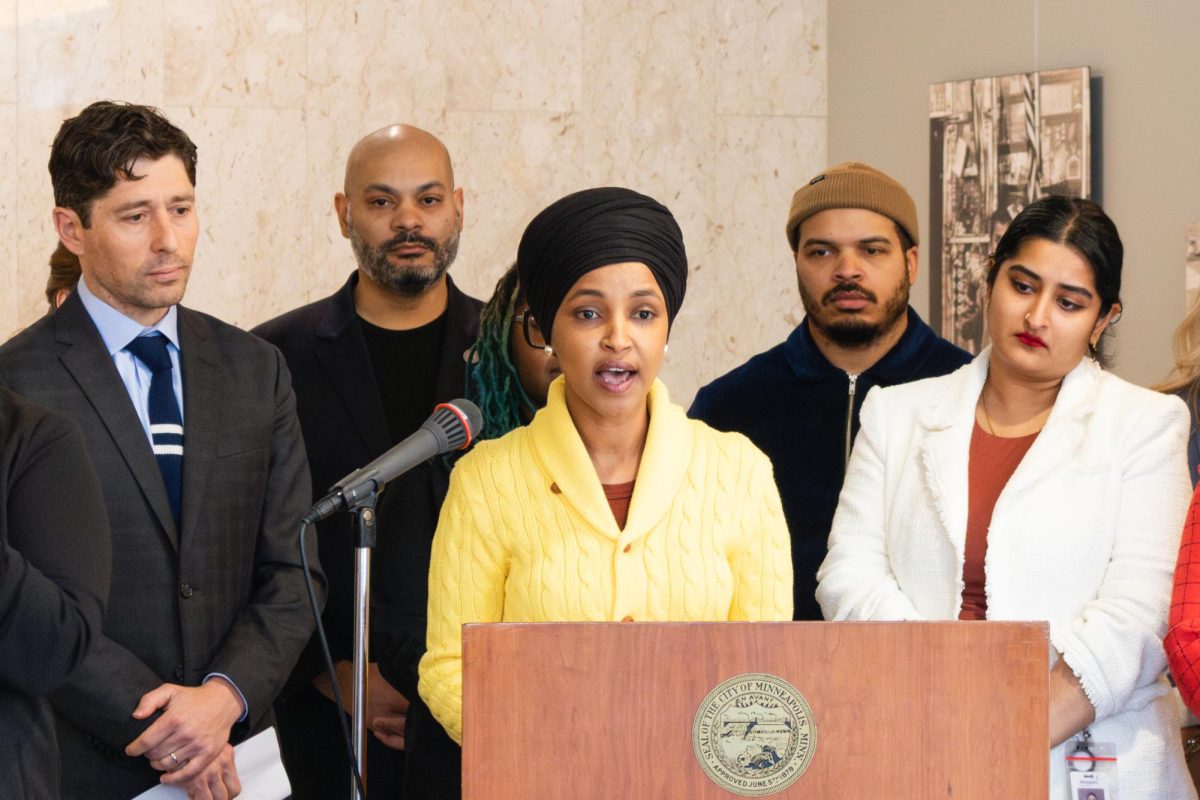A towering high-rise could drastically change Dinkytown’s skyline.
The project, proposed by CA Ventures and ESG Architects to the Marcy-Holmes Neighborhood Association last month, would replace well-known hot spots like McDonald’s and Dinkytown Wine and Spirits with either a 16 or 25-story apartment building. With city approval, construction would begin by mid-2020.
The site of the proposed construction is currently home to McDonald’s, Dinkytown Wine and Spirits, Pagoda, the now-closed Himalayan and Five Guys. CA Ventures presented two options for the apartment building: one with 16 stories and the other with 25 stories. This would include about 350 to 370 units, 1,000 bedrooms and 240 parking spots.
The proposal also suggests improved bus shelters, pedestrian amenities, bicycle repair, water stations and public art.
Dinkytown has seen major developments since 2010, including Sydney Hall, Venue at Dinkytown and The Marshall, creating some controversy in the area’s recent past.
“There’s so many different parties, it’s like aligning the sun, moon and stars,” said Ryan Sadowy, director of development at CA Ventures. “We’re hoping to make something great on that site.”
Sadowy said businesses currently at the site have been offered retail spaces in the development. CA Ventures would also encourage other local businesses to become tenants with a reduced rent. McDonald’s is likely to come back into retail space on the building’s street level post construction in the fall of 2022, Sadowy said.
Planning process raises concerns
The scope of the project has raised questions from community members about the future of Dinkytown’s current identity as a quaint college neighborhood.
The Marcy-Holmes Master Plan, adopted in 2014, laid out goals including strengthening the spirit of businesses in the neighborhood, improving transportation options and preserving the area’s historic character while still fostering commercial redevelopment.
The Minneapolis 2040 Comprehensive Plan would increase density citywide, but the 2040 plan doesn’t allow for the proposed project’s degree of density in Dinkytown. In response, CA Ventures is seeking to amend Minneapolis 2040, which will seek final approval later this month.
For some community members, the act of amending a not-yet-approved Minneapolis plan is peculiar.
“It’s that question of process,” said Chris Lautenschlager, executive director of MHNA. “It’s hard to believe in the 2040 planning process that they just kind of thought of Dinkytown as an afterthought. It’s one of the most significant neighborhoods in the city of Minneapolis.”
Historic Dinkytown
Dinkytown’s role as a historic neighborhood in city planning processes is not new.
In 2015, the city approved the historic designation of Dinkytown’s commercial district. MHNA and Preserve Historic Dinkytown supported the move, citing a city study on the area’s history.
Guidelines for future developments, stemming from the historic designations, are being finalized through the city. However, adoption has been put on hold.
“That corner has been studied was evaluated and it’s not just some oversight,” said Kristen Eide-Tollefson, project coordinator for Preserve Historic Dinkytown.
Pagoda and McDonalds are not officially part of the historic district, but are recognized as historically significant. The proposed project plans to pay homage to the historic aspects of the buildings, according to the project proposal.
Student housing needs
With Dinkytown’s large student population, housing plays an important role in the area’s landscape.
“There’s just a shortfall in housing,” Sadowy said. “It’s supply and demand.”
In data sent to the Minnesota Daily by CA Ventures from its market study, current available student housing can only accommodate a small percentage of the total enrolled student body.
While there may be a need for housing, many students who live near Dinkytown said new developments also need to be affordable.
“All of these apartment places are nice, but I mean we’re on a college campus and a lot of it is completely unaffordable,” said University senior Dylan Bassett.
In 2018, the city of Minneapolis enacted an inclusionary zoning policy mandating developers include affordable units in every large-scale development. Student housing, which often falls into a gray area, was not included in the city’s original policy.
In its current proposal, affordable housing units have not been ruled out.
“Smart urban growth”
Over the past decade, residential developments have gradually increased the scale of Dinkytown. CA Ventures development at 16-to-25 stories is still significant compared to lesser-storied buildings.
“Dinkytown should be ever-evolving, but it should not destroy the scale that makes it meaningful and accessible and affordable to businesses and students,” Eide-Tollefson said.
MHNA, the city of Minneapolis and other stakeholders launched the The Road Map to Greater Dinkytown in 2018, which aims to address the needs “unprecedented scale of growth” in the area.
Dinkytown Wine and Spirits owner Irv Hershkovitz said investment in Dinkytown is needed.
“It’s a real tough area, so it needs some help, it needs some changes,” he said.
Herkovitz said his liquor store would not return to Dinkytown, but none of the businesses are “just getting kicked out on the street.”
David Feehan, consultant on the Roadmap to Greater Dinkytown project, said with this scale of a project, community support will be essential. The next MHNA meeting discussing the project will be held on Sept. 10, where more detailed designs will be presented.
Despite her concerns, Eide-Tollefson said she hopes the development would create a boom for the area.
“It’s exciting to be part of the place where its energy remains ever hopeful… a place where connections are made, remade and sustained,” she said. “That’s a really precious piece of Dinkytown.”







